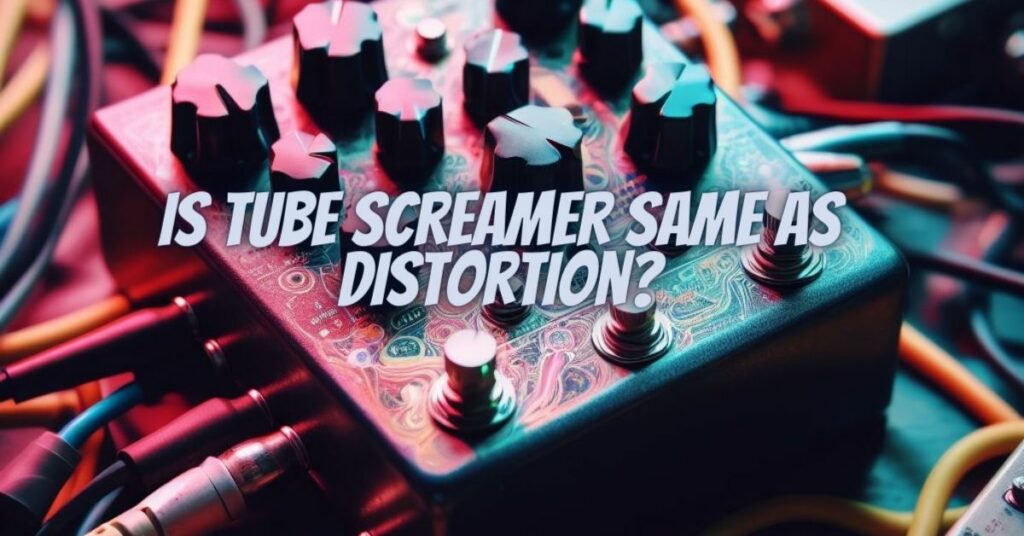The world of guitar effects pedals is vast, with each pedal contributing a unique flavor to a guitarist’s sonic palette. One pedal that has sparked considerable discussion and debate is the Tube Screamer. Is it simply an overdrive pedal, or does it venture into the territory of distortion? In this exploration, we’ll dissect the characteristics of the Tube Screamer and unravel whether it can be equated with the broader category of distortion.
The Tube Screamer Unveiled
The Ibanez Tube Screamer has achieved legendary status since its introduction in the late 1970s. Known for its warm overdrive, touch sensitivity, and a distinct midrange bump, it has become a staple on pedalboards across various musical genres.
Defining Overdrive and Distortion
Before delving into the Tube Screamer’s identity crisis, it’s essential to clarify the distinctions between overdrive and distortion:
- Overdrive: Overdrive pedals aim to push the amplifier into a natural, warm overdrive, preserving the fundamental characteristics of the guitar and amplifier’s sound. They often exhibit touch sensitivity and maintain a transparent quality.
- Distortion: Distortion pedals, on the other hand, introduce a more pronounced level of gain and compression. They are characterized by sustained notes, a more significant clipping of the signal, and a potentially altered core tone.
Tube Screamer as an Overdrive: The Case
- Moderate Gain Range: The Tube Screamer typically features a moderate gain range, which aligns with the characteristics of an overdrive pedal. It’s designed to add a layer of warmth and responsiveness without veering into heavy distortion territory.
- Transparent Tone: Overdrive pedals, including the Tube Screamer, are known for their transparency. They enhance the natural sound of the guitar and amp, making them suitable for genres where maintaining the original tone is crucial.
- Touch Sensitivity: A hallmark of overdrive is touch sensitivity, where the pedal responds dynamically to the player’s nuances. The Tube Screamer excels in this area, providing a responsive and expressive playing experience.
Tube Screamer as Distortion: The Counterargument
- Sustain and Compression: As the gain on a Tube Screamer is increased, it enters a realm where sustained notes and compression become more pronounced. These qualities are often associated with distortion pedals, indicating that the Tube Screamer can exhibit distortion-like characteristics.
- Clipping Characteristics: Distortion pedals typically introduce more aggressive clipping, resulting in a more pronounced alteration of the signal. When the Tube Screamer’s gain is pushed to its limits, the clipping becomes more apparent, blurring the line between overdrive and distortion.
The Gray Area: Tube Screamer’s Identity
The Tube Screamer’s identity lies in the gray area between overdrive and distortion. It embodies elements of both, providing a unique blend that has made it a versatile and sought-after pedal.
In the end, labeling the Tube Screamer as either an overdrive or distortion may oversimplify its sonic capabilities. The Tube Screamer is a chameleon, adapting its character based on the guitarist’s preferences and playing style. Its ability to straddle the line between warm overdrive and pronounced distortion is what has made it a timeless classic, leaving its mark on the sound of countless guitarists worldwide. Rather than fitting neatly into a single category, the Tube Screamer invites exploration and interpretation, offering a sonic journey that defies strict classification.


